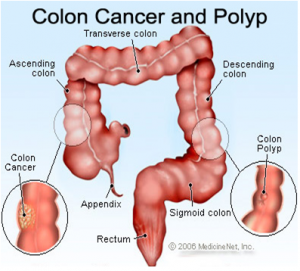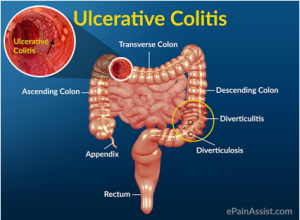ColoRectal Cancer
ColoRectal cancer incidence has increased in recent past. Most common GI Cancer in young adults
Colon is divided into four parts ascending colon/transverse colon/descending colon/sigmoid colon; cancer can occur at any part and patient symptoms differ depending on site of cancer, Generally right side colon cancer present with symptoms of anemia like weakness/fatigue as the tumor here bleeds and lumen diameter is more so features of constipation are rare. Left sided colon cancer mainly present with constipation or acute intestinal obstruction. Rectal cancer present with fresh blood in the stool along with difficulty in passing stools
When patient present with features s/o colorectal cancer , full length colonoscopy should be done. It will show the growth and can also show other synchronous lesions if present, biopsy will confirm the diagnosis; CECT abdomen is done as part of staging and if resectable curative resection is done. Pre-operative blood CEA level is done which is used to follow-up patient after surgery, Increased CEA level suggest recurrence of tumor.

For rectal cancer, anterior resection is done. Depending on the site of cancer it may be low anterior resection (LAR) or ultra-low anterior resection. Neo-adjuvant chemo-radiotherapy in locally advanced rectal cancer increases the survival rate and should be considered in all such patients
GI surgeons specialized in colorectal surgery are Colorectal surgeons. There foci of interest is colon & rectal surgery. Circular staplers has revolutioned the field of rectal surgery. Earlier it was very difficult to do an anastomosis deep in the plevis with hand-sewn technique and leak rate were high

Ulcerative Colitis
Ulcerative colitis is a chronic inflammatory condition involving mucosa of the rectum and colon, it starts from the rectum and involve in a retrograde fashion the proximal colon
When disease is located in the rectum only and patient present with bleeding per rectum sometimes they are misdiagnosed and treated for hemorrhoids (piles); however when patient presents with recurrent diarrhea and bleeding ,colonoscopy is must and biopsy should be taken from suspected lesions that will confirm the diagnosis
First line treatment is medical, in acute phase steroids are given once the patient respond steroids are tapered and stopped and maintenance medical therapy is started, this maintenance therapy should never be stopped otherwise disease will recur, sometimes patient does not respond to steroid or other immunosuppressive therapy or disease become active as steroids are stopped (steroid dependent) or develop complications related to disease per se then surgery is done; As the disease process involve whole of large bowel and rectum, so total proctocolectomy is done and bowel continuity is maintained by creating an ileal pouch and it is anastomosed to anal canal

